Picture This
Food Evolution
Finance & Development, December 2016, Vol. 53, No. 4
Increased agricultural efficiency and productivity are critical for future food security
More than 750 million agricultural laborers around the world produce the food that sustains all 7.4 billion people on Earth.
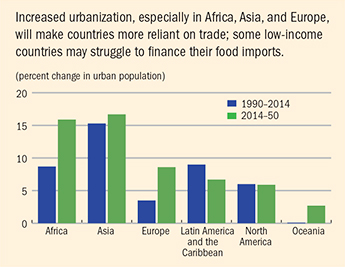
Although global food production can feed everyone, food security remains a problem in many places. Because most food is consumed domestically, markets and distribution are influenced by country-specific factors such as weather conditions, poor infrastructure, and poverty. Food is only a small portion of total global trade, but food sovereignty and protection of domestic farmers are longtime sticking points in trade negotiations.
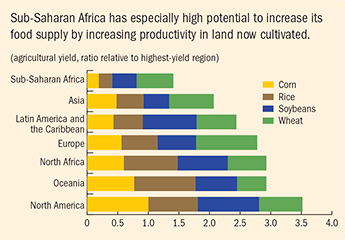
Rapid population growth, largely in cities, has outpaced domestic food production in many countries, leading to increased reliance on food imports in several. Since 1990, 27 countries have switched from being net exporters to importers of food. Though not a problem for wealthy economies, some impoverished countries have struggled to finance the new imports. To add to developing economies’ difficulties, the newfound need for food imports coincides with a nonfood commodity price bust that has reduced their export receipts.
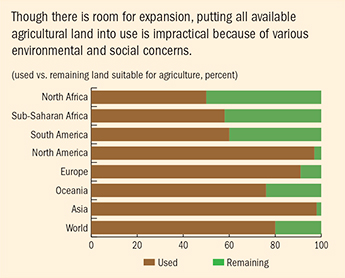
The number of countries that will face food insecurity will surely grow. If all currently available agricultural land were put into use by 2050, the world could feed, at best, only 9 billion of the projected 9.7 billion population. This estimate overlooks the downside of large-scale land use expansion: deforestation, biodiversity loss, soil degradation, and increased carbon emissions—all of which contribute to climate change and take a toll on crop yields and livestock productivity. Future food supply increases must come from greater productivity of land that’s already cultivated.
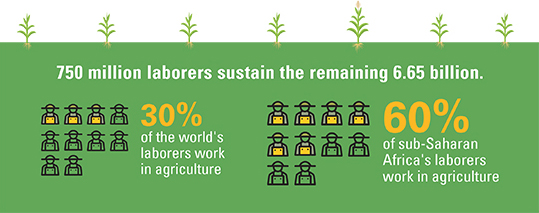
Technology may help farmers increase yields of nutritious crops sustainably and efficiently. For example, genetically modified C4 rice uses water and nitrogen more efficiently and yields 50 percent more than conventional rice. But much of the world worries about the safety of genetically modified crops.
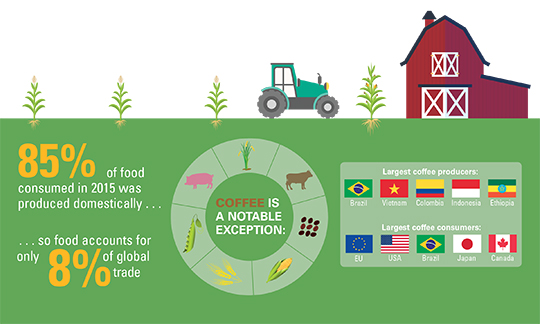
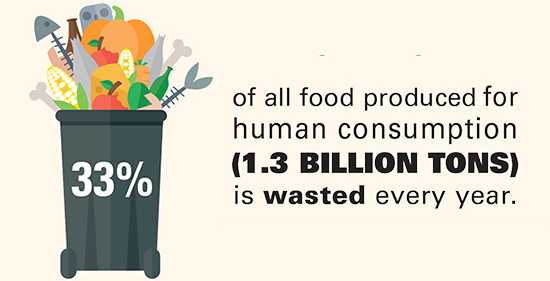
Food demand will continue to grow with the global population, and the move from rural to urban areas will mean more countries rely on trade to meet that demand. Rising incomes will boost the demand for meat, dairy, and fresh produce. Long-term solutions to food insecurity call for less excess consumption and food waste, removal of barriers to trade, and higher productivity. Low-income countries should also do more to attract capital flows and investment in the agricultural sector. ■
Prepared by Maria Jovanović. Text and charts are based on the Commodities Special Feature in the IMF’s October 2016 World Economic Outlook.
Opinions expressed in articles and other materials are those of the authors; they do not necessarily reflect IMF policy.


